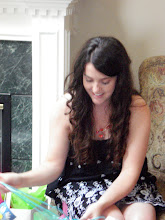**Disclaimer: This post will be talking about NWEA (Northwest Evaluation Association) MAP (Measures of Academic Progress) assessment. This is an assessment that my district has purchased to measure growth in reading and math three times per year. I am in no way associated with NWEA other than the fact that I enjoy using the data from this assessment to inform my instruction and interventions**
I know that many schools use the MAP assessment to measure growth and so I thought that I might share the BASICS of what goes into our interpretation of the results in case it would be useful to you!
When your students take this assessment, they get a variety of scores- an overall RIT score and then each subject is broken down into smaller categories. The overall RIT is a great snapshot into where they are performing and you can see where your students fall in relation to other students who take this assessment. For example, the average third graders in the winter would score a 194 on the reading assessment so you would know if they are at, below or above the average. You can also look at typical progress and see if they are exceeding growth expectations (always a plus :) ). What I look at closely is the breakdown of the overall score which breaks reading into five strands: Comprehension, Word Skills, Variety of Purpose, Text Features, and Think Critically & Analyze. I look at my kiddos and see where their strengths and weaknesses are according to those strands. I can look even further into what score range they fall. These numbers help me get an idea of what skills/learning expectations they are struggling with or which they have already mastered. I use a handy dandy organizer to pencil the kiddos in based on what they are struggling with/need to move forward. Now I am ready to group students and my instruction for those groups is much more focused. Of course, this assessment doesn't give me the materials to teach those skills- so I am still creating, begging, borrowing, stealing, pinteresting, blogging, teacherspayteachersing, asking neighbors- in short- whatever it takes! :)
 |
| This is the organizer that we use- feel free to grab a copy! |
My team has decided to take things a bit further this year. We are a small school and have three third grade teachers with 60 students total. So, we share our kiddos A LOT! For us, it is easy to keep up to date with the communication and the kids love that they get to have all of us as their teachers. We have a 90 minute core reading block which we group based on those overall RIT scores I mentioned earlier (and our teacher judgment of course). Then we have a 75 minute math block that we group the same way. AND THEN, we have a 30 minute intervention time that we group based on those strands I talked about earlier. I am teaching an algebra strand right now for math intervention.
How do you all meet the learning needs of all your kiddos? Do you "share" kids with other teachers? Or do you have small groups in your classroom? Or both/all of the above :) ?







I've got small groups in my room. I'm not good at sharing...yet. :)
ReplyDelete❀ Tammy
Forever in First
I imagine that sharing would be hard with your firsties...my team has already started talking about what we are going to do with second graders next year. We don't want to push them into it because it's what WE want even though they might not be ready! :)
DeleteThanks so much for sharing your ideas. This is the first year my school hasn't used NWEA testing for our kiddos due to budget constraints. I loved the data that this test provides within a short period of time. ( Our school did just finish up a pilot through NWEA of the common core standards test.) I am a new follower. I too teach 3rd grade.
ReplyDeleteKrista
stellar-students
Thanks for finding me Krista! I am on my way to your site to follow you too! :)
DeleteFor some teachers, it is hard to share because they feel so responsible for their "own" kids' learning. We use a variety of assessments: DRA and IRI building wide, phonological assessments pre-k-1, and Acuity for grades 3-5.
ReplyDeleteLori
Conversations in Literacy
Hey Julie - My school just started using the NWEA Map tests too. I teach first grade this year, and I really like the feedback the test provides! Plus, it's so nice not to have to administer all of the paper-book tests. This year I've broken the kids into small reading groups and we focus on skills and reading based on my own observations of their needs and the Map test feedback... I also try to plan whole-class instruction based on where the greatest chunk of my kids fall, and even some whole-class instruction targeted to my highest-scoring students. I taught at a private school and their philosophy was teach to the top, and the other kids will rise up to it. ? But I'm still very much open to ideas, so I loved this post.
ReplyDeleteEmily
will you check out my blog?
Tangled with Teaching
I submitted before I was truly done! :) My school also switches classes for math, and I think it works great! Plus, I wanted to ask how on earth you have just 60 kids and 3 teachers? That sounds SO nice!
DeleteIt is nice- except my school is so transient that we start the year with 75+ and then ebb and flow as the year goes on- I probably lose/gain at least one student every month!
Delete